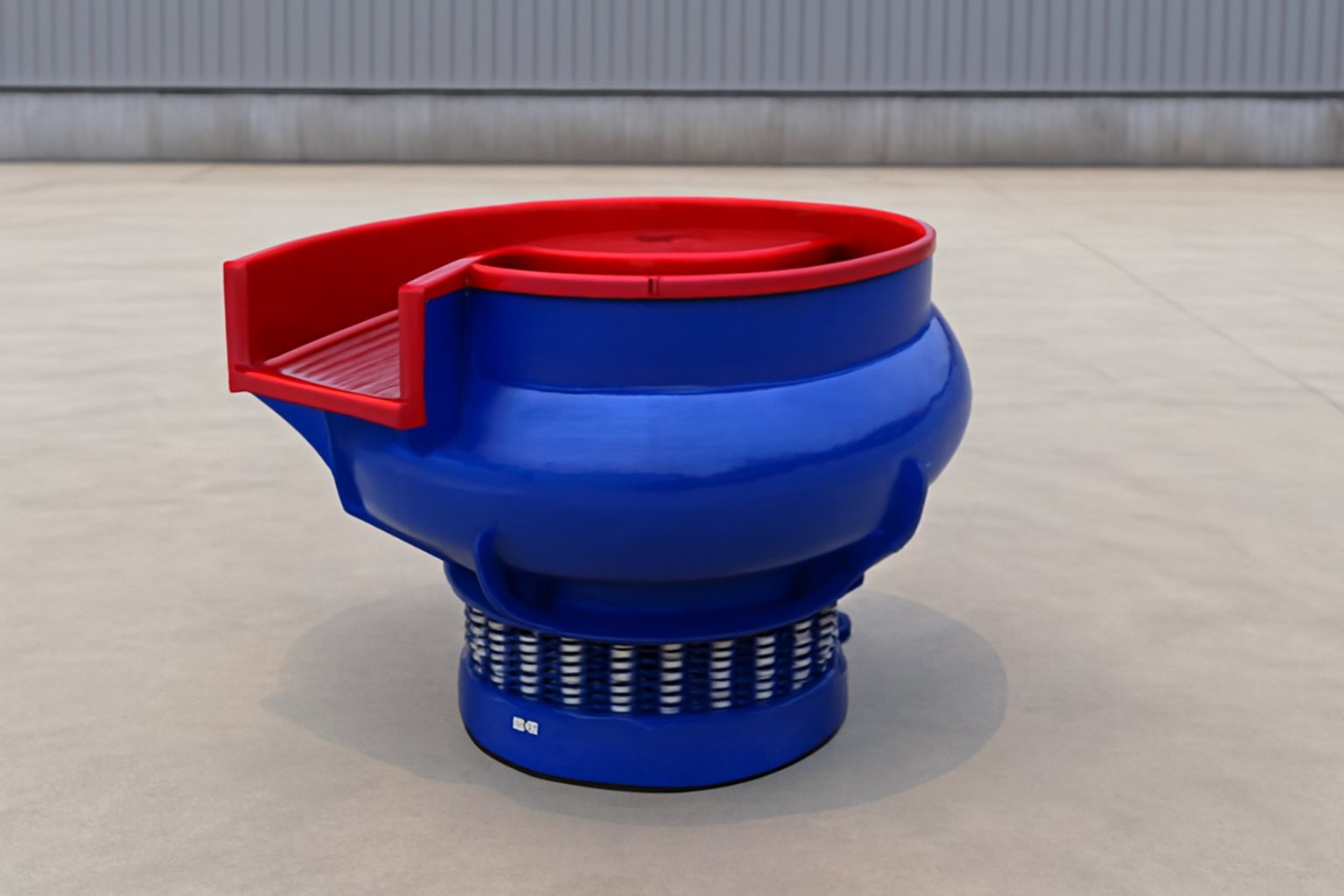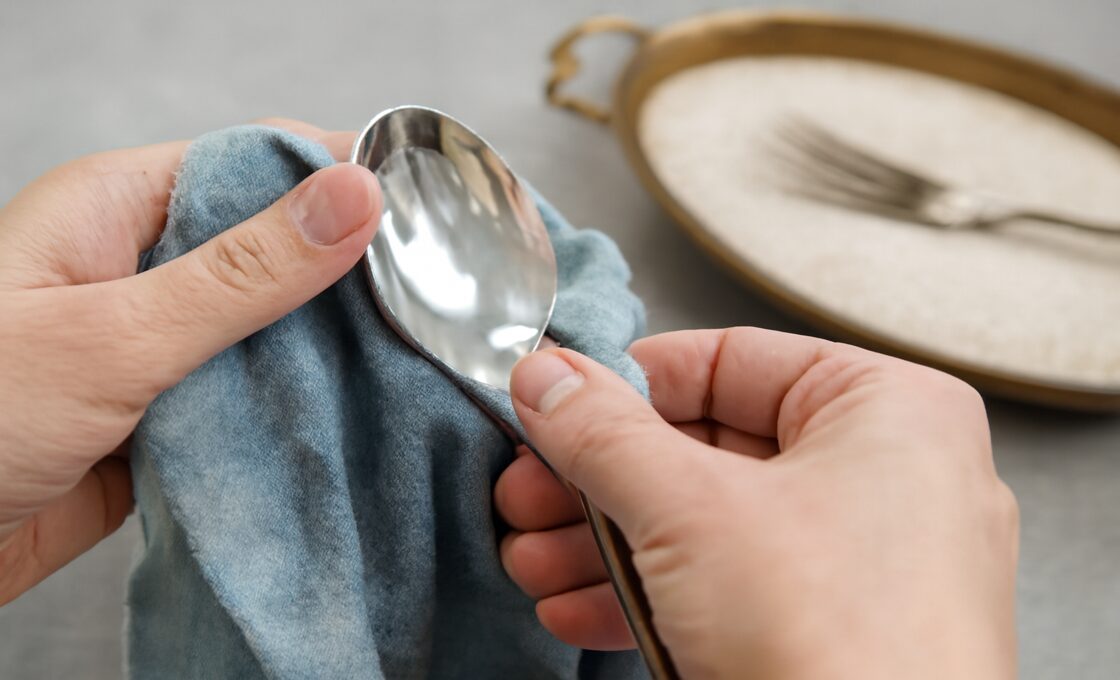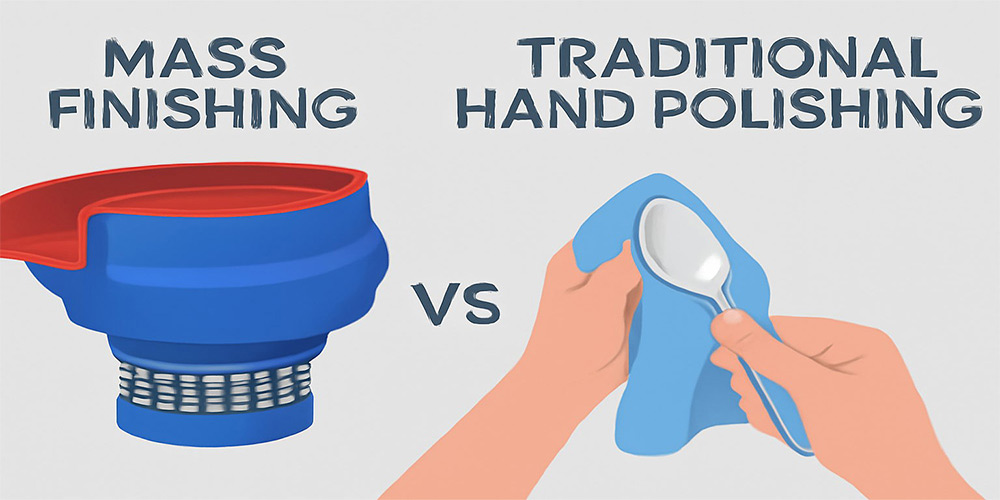在选择表面处理方法时,制造人员面临一个关键问题:应该投资自动化批量精加工系统,还是依赖传统的手工抛光技术?这一决策不仅影响生产成本,还会影响最终的产品质量,因此,是一个直接影响运营效率和客户满意度的关键选择。
批量精加工在批量生产环境中具有显着优势,能够同时处理整个批次,并保持绝对的一致性。自动化方法显着减少了手工需求,同时确保数百甚至数千个零件获得一致一致的效果。然而,传统的手工抛光仍然是复杂的几何形状和处理表面的黄金标准,技艺精湛的工匠能够实现无法机器复制的精密微的效果。
为了权衡这些最佳选择方法的技术约束和适当的应用,才能实现成本的决策瓶颈。凭借20多年提供表面处理解决方案造成的经验,Rax机器观察到许多公司通过实施两种技术的战略组合来获得效果——利用批量精加工进行初步处理,同时在精度要求最高的关键表面保留手工润色。
جدول المحتويات
是什么让大规模精加工成为大规模生产的行业标准?

“与传统的手工精加工方法相比,大规模精加工可以为制造商提供大规模统一的表面处理效果,同时显着降低劳动力成本。"
自动化表面处理背后的科学
自动化表面精加工利用基本物理原理来实现一致的效果。大多数批量精加工系统利用介质、化合物和机械能对工件表面进行可控的磨损。这种科学方法使制造商能够准确控制作用切削力、润滑效果和清洁能力等因素。
通过工艺介质与零件之间的摩擦、冲击和化学响应来实现。这些力有效地消除了毛刺、圆边,并改善了所有零件表面的表面粗糙度。随着时间的劳累和手动操作的不同,机械系统在整个生产过程中保持一致的能量施加。
批量精加工如何实现均匀的结果?
提出的批量精加工技术通过控制工艺参数,实现了卓越的均匀性。例如,在振动精加工中,振动的幅度和频率经过精确调整,达到特定的精加工特性。零件在大量介质中自由运动,这些介质同时接触所有可接触的表面。
“一劳永逸”的功能相比传统的手工抛光技术,无疑是一大进步。传统的手工抛光效果很大程度上取决于操作人员的技巧、压力变化以及对细节的关注。而批量精加工则不同,一旦工艺参数确定,就可以在生产各个批次中保持一致——这是手工方法无法实现的。
工业表面处理方法比较
| 绩效指标 | 手动整理 | 振动抛光 | 织物整理 | 离心精加工 | 高能精加工 |
|---|---|---|---|---|---|
| 加工时间(小时/100个零件) | 25-40 | 3-6 | 4-8 | 1-3 | 0.5-1 |
| 工时(每1000个零件) | 250-400 | 5-10 | 6-12 | 4-8 | 3-5 |
| 表面粗糙度一致性(Ra%) | ±30% | ± 10 ٪ | ± 12 ٪ | ± 8 ٪ | ± 5 ٪ |
| 材料去除率(μm/分钟) | 2-5 | 0.5-2 | 0.8-2.5 | 3-8 | 10-20 |
| 比例(千瓦时/100份) | 5-8 | 15-25 | 12-20 | 30-50 | 40-65 |
当生产量需要自动化时
从传统精加工到大规模精加工的衔接点通常发生在产量达到一定阈值,手工精加工在经济上变得不可持续时。当批量超过数百个相同零件,或生产率要求每周处理数千个零件时,制造商通常会开始考虑制造表面精加工自动化。
在大的批量下,手工的限制急剧增长。劳动力成本不断攀升,质量一致性受到影响,并形成生产瓶颈。批量精加工系统能够同时处理数百甚至数千个零件,这么小的操作人员干预,从而消除了这些限制。
降低劳动力成本:节省背后的数字
在劳动力需求时,批量精加工是重点。传统的手工精加工可能需要25-40小时的手工精加工才能加工100个零件,而配置合理的振动系统大约3-6小时,几乎可以实现手工精加工完成同数量的零件加工。这意味着工时减少了约80-90%。
这些劳动力的节省直接转化为生产成本的降低。虽然大规模精加工设备需要初始资本投资,但对于大规模生产,投资回报通常在6-18个月内实现。减少对劳动力的依赖也有助于制造商应对地区的劳动力挑战。
复杂几何形状中的关键限制
尽管批量精加工具有加工优势,但与传统方法相比,仍存在一些局限性。具有内部特征、深凹坑或极其脆弱的几何形状的复杂部分,仅通过批量精加工可能无法达到最佳效果。这些区域可能难以接触到介质区域,或者与外部表面相比,其处理效果可能不一致。
此外,对于某些追求完美美学的高价值应用,批量精加工无法完全复制手工抛光的精细控制。高级珠宝、定制枪械和某些医疗器械仍可能受益于手工精加工,或批量精加工和手工精加工相的混合工艺。
[特色图片]:工业离心式精加工机在大批量生产工厂中加工高效铝制部件 [البديل:用于工业表面处理的离心式精加工设备]
手工抛光何时能证明其美味的成本是合理的?

“通过精确的压力控制和自适应技术进行手工抛光可提供卓越的表面质量,而自动化精加工系统无法在某些高价值应用中复制。"
工匠之手:实现卓越的表面质量
传统抛光方法在要求卓越的表面玻璃和表面均匀度的应用领域中表现。高质量的工匠能够采集地理解材料对不同化合物和工艺的反应。这种吸取反馈回路——采集表面质量改善时阻的变化——能够实现自动化系统无法实现的实时调整。
手工金属抛光技术能够打出独特价值的个性器具、层次丰富的表面效果,这在高端产品中极为明显,表面外观直接影响着产品的烹饪。因为手工抛光的表壳或奢华笔杆实验出机器抛光难以企及的立体玻璃,其造型的玻璃能够捕捉光线,这是批量抛光表面无法比拟的。
奢侈品与航空航天工业中的关键应用
追求完美、成本昂贵的行业主要采用手工抛光。虽然成本居高不下,但营养手表制造商仍然坚持对可见部件进行传统的手工金属抛光。同样,航空航天制造商也采用手工技术来处理关键部件,因为这些部件的表面规则性可能会影响其性能或安全性。
医疗入户物制造商依靠精湛的工艺来制造将在人体内使用工件年的部件。自动化修复与最终手工抛光的战略性组合,为这些公差以微米为单位的高风险应用创造了最佳效果。
质量指标比较:手工抛光与自动抛光
| 质量参数 | 手工抛光 | 振动抛光 | 离心精加工 | 拖曳整理 | 行业标杆 |
|---|---|---|---|---|---|
| 表面粗糙度(Ra μm) | 0.01-0.05 | 0.1-0.3 | 0.05-0.2 | 0.03-0.15 | < 0.2 |
| 边缘定义控制 | 出色的 | 贫穷的 | 公平的 | 好的 | 依赖于应用程序 |
| 区域局部处理 | 准确的 | 不可能 | 不可能 | 有限的 | 需要经常 |
| 表面反射率(%) | 95-99 | 70-85 | 80-90 | 85-95 | > 90 为保费 |
| 加工成本(美元/平方英寸) | 3.50-15.00 | 0.20-0.80 | 0.40-1.20 | 0.75-2.50 | 因行业而异 |
挑战自动化的复杂几何形状
具有复杂、深凹部或表面要求变化的部件通常需要手动处理。虽然批量抛光在处理简单的几何形状部件时效果显着,但对于内部有通道或狭窄转角的复杂部件,水槽抛光介质难以持续处理。手动抛光师可以使用专用工具和自动技术来处理这些区域。
结合多种材料或需要选择性精加工的产品也能从方法中完成。“补漆师”可以精准地处理区域特定,而不影响后续手工表面——无论如何技术进步,自动化系统的控制水平都无法拟定。
手工抛光值得投资吗?
传统抛光方法的经济价值获得高度依赖于收益、零件和质量要求。对于高部件而言,其表面质量直接影响其功能或市场地位,因此,与附加值相比,额外的成本微不足道。
由于功能公差允许增加变化的商品或零部件,计算方法存在很大差异。在经济性评估批量精加工与传统手工抛光时,制造商不仅要考虑每个零件的人工成本,还应考虑废品率、返工成本以及优质表面处理的潜在市场溢价。
熟练抛光工的培训要求
培养高素质的手工抛光师需要大量的培训和指导投入。熟练的从业者通常需要1-3年的指导实践才能掌握传统的抛光方法。这种学徒模式即使创造了独特的人力资本,自动化程度不断提高,其价值依然不减。
通过这种批量精加工技术,能够跨行业、材料应用,使精细的跨抛光技术成为制造环境中的宝贵资产。拥有手工抛光能力的公司通常会开发真空技术,这些技术在批量精加工能够满足质量要求的专业市场中成为竞争优势。
[特色图片]:工匠大师利用传统技术和手工抛光精密航空航天部件[البديل:工匠大师的工匠对复杂部件进行手工金属抛光]
不同方法的表面质量和一致性如何比较?
在评估批量精加工与传统手工精加工方法时,无论是通过勘察测量还是惊人评估,表面质量和均匀性的差异都激增。制造工程师必须平衡这些质量量考和生产需求。虽然自动化工艺在一致性和产量方面表现良好,但考虑到传统技术某些特定应用中也能实现卓越的表面效果,这些应用为了美观或功能方面的,需要卓越的表面特性。
“表面质量测量揭示了批量精加工和传统手工抛光之间不同的性能特征,端点方法都根据应用要求和材料特性提供了特定的优势。"
测量表面粗糙度:Ra值比较
表面粗糙度以Ra(算术平均粗糙度)为单位,以微米或微英寸为单位,能够最准确地比较金属加工精加工工艺。由精密的技术人员进行手工抛光,在最佳材料上可实现低至0.01-0.05μm的Ra值。相比之下,标准振动质量精加工的Ra值通常在0.2-0.8μm之间,而专业的高能工艺可以达到接近0.1μm的Ra值。
批量精加工则依赖于随机的介质冲击,虽然有效降低主要的不规则性,但很难达到手动通过技术所能达到的绝对光滑度。
批次间的一致性:数据说话
虽然手工抛光可以达到极佳的绝对光洁度,批量抛光则表现出显着的一致性优势。生产数据显示,振动和离心抛光系统在大批量生产中产生的表面粗糙度变化±8-15%。但即使是手工抛光的操作员进行手工抛光,在相当数量的零件上测量时,通常也会出现±25-40%的偏差。
这种一致性优势在需要流程的监管环境中至关重要。医疗器械和航空航天制造商通常选择批量精加工,记录在案例中的可重复性简化了因此严格质量体系的合性规范。微精加工的可预测性使工程规范更加可靠。
不同精加工方法的表面质量比较
| 质量参数 | 手工抛光 | 振动抛光 | 离心精加工 | 拖曳整理 | 行业标准 |
|---|---|---|---|---|---|
| 最佳可实现 Ra (ميكرومتر) | 0.01-0.05 | 0.2-0.8 | 0.08-0.3 | 0.05-0.2 | 依赖于应用程序 |
| 批次间一致性 (ر %) | ±25-40% | ±10-15% | ±8-12% | ±10-18% | ±15% 典型值 |
| 边缘保留系数 | 0.9-0.95 | 0.6-0.75 | 0.65-0.8 | 0.75-0.85 | 至少精度为0.8 |
| 最大材料去除率(μm/小时) | 5-20 | 2-8 | 10-25 | 5-15 | 依赖于应用程序 |
| 均匀表面纹理评分(1-10) | 7-9 | 8-9 | 7-8 | 8-9 | 7+ |
注意到患者的视觉差异
表面不仅包括纹理包括预设的测量,还包括顾客容易感知的定性方面。手工修饰的控件通常会出定向图案,从而产生独特的光反馈特性。这些受控的定向表面处理可以提升消费的美感,并通过差异视觉化来提升产品的价值。
批量精加工的零件表面呈现无方向性、“黄油般光滑”的表面,且无可见的刀痕。这种均匀的外观有利于确保多个可见表面一致性的产品。无方向性纹理还能改善某些功能特性,例如减少移动组件的摩擦力,以及由于没有微通道而增强的耐磨损。
特定材料的精加工结果
材料特性会显着影响不同方法的精加工效果。铝、面和铜等较软的材料对批量精加工的响应与手工精加工不同。批量精加工在这些材料上往往能产生比较均匀的结果,但对于硬度区域各异的复杂零件,批量精加工可能需要进行选择材料。
不锈钢和钛等硬度更高的合金在表面质量方面面临着独特的挑战。这些材料通常利用于高能批量抛光中可能产生的高强度能量,这可以克服其固有的耐磨性。然而,在手工抛光中巧妙地使用专用化合物,可以使这些材料达到大规模抛光难以复制的镜面效果。
不同表面处理的加工
不同加工方法的表面光洁度差异很大。批量加工的表面通常表现出优异的耐腐蚀,这得益于介质冲击产生的电压振荡层。这种加工疲劳效应使表面硬度与预加工状态相比提高10-30%,从而延长部件的寿命。
手工抛光产生的残余压力较轻,但外观重于加工的应用,却能实现卓越的美观效果。为了获得最佳性能,许多制造商采用混合方法——利用批量抛光进行抛光处理,对曲面关键区域进行手工抛光——从而产生两种金属加工精加工工艺的优势。
[特色图片]:在相同的键盘条件下,批量抛光和手工抛光表面质量的并排比较,显示出微小差异[البديل:放大后批量抛光和手工抛光表面质量的并排比较]
最适合您的生产需求的混合方法是什么?
大规模精加工与传统手工抛光之间的争论通常将这两种方法视为通过相互竞争的替代方案,但具有良好的制造商越来越多地采用混合方法,充分利用两种技术的优势。战略性地整合自动化和手动流程,公司可以同时优化质量和效率。这种平衡的方法使制造商能够将资源精准地引导到能够实现最大价值的领域,将大规模精加工实现广泛的表面处理,同时将手工作业保留在那些需要额外投资以获得卓越表面质量的区域。
“设计提出的混合精加工策略将批量精加工的效率和一致性与传统精细抛光的精度和质量相结合,以优化生产成本和表面质量结果。"
识别关键表面与非关键表面
任何有效的混合方法都从组件表面进行系统分类。关键表面(客户可见、需要与组件精确配合或对产品功能关键的表面)通常值得投入更高的精加工投资。相比之下,仅具有功能性要求的非关键表面通常可以通过更经济的批量精加工方法获得足够的其他性能。
此分类流程应通过产品工程文档正式化,明确区分需要精加工的表面和适合自动化精加工的表面。许多制造商采用简单的三级系统:A类表面(需要高级精加工)、B类表面(一般标准生产精加工)和C类表面(仅可进行功能性精加工),每个类别都对应特定的精加工工艺。
两级精加工工艺
最高效组件的混合表面精加工通常采用两阶段方法。首先,对进行批量精加工,建立基准表面特性——提高制造尺寸,建立的纹理,并在所有表面实现一致的特性。这为后续操作奠定了标准化的基础。
在第二阶段,精准手工精加工只针对被整理为关键的表面。这种高效的“两全其美”的方法显着减少了人工需求,同时仍能在最关键的位置提供优质的表面处理。第一阶段标准化的基础条件也使后续的手工作业更加可预测和,因为技术人员的工作起点是一致的。
制造表面处理的成本效益分析混合
| 过程方法 | 初始设备投资(美元) | 每 1000 个零件的人工成本(美元) | 处理时间(小时/1000个零件) | 质量一致性(1-10) | 年度维护成本(美元) |
|---|---|---|---|---|---|
| 100%手工精加工 | 5,000-15,000 | 8,500-12,000 | 250-400 | 5-7 | 1,000-2,500 |
| 基本混合(80/20 分割) | 45,000-85,000 | 2,800-4,200 | 70-120 | 7-8 | 3,500-7,000 |
| 高级混合(90/10 分割) | 75,000-150,000 | 1,500-2,800 | 40-80 | 8-9 | 5,000-10,000 |
| 100% 批量精加工 | 12万至25万 | 800-1,500 | 25-60 | 8-9 | 8,000-15,000 |
| 全自动生产线 | 35万至120万 | 400-800 | 15-30 | 9-10 | 15,000-40,000 |
投资回报率计算:何时投资每种方法
混合精加工技术的经济可行性在很大程度上取决于产量、零件复杂程度和质量要求。对于月产量低于500件的零件,大规模精加工设备的资本投资很少能带来足够的回报,除非这些零件的手工精加工极其耗费人力。对于中等产量(每月500-5,000件),采用基本的大规模精加工设备并辅以有针对性的手工抛光通常能实现最佳的成本-质量平衡。
在计算投资回报率 (ROI) 时,制造商不仅应考虑直接人工成本的节省,还应考虑废品率的降低、产量的提升以及质量一致性的提升。全面的投资回报率分析应涵盖这些因素,通常表明,对于具有混合质量要求的中等产量生产商而言,混合方法最快达到盈亏平衡。
不同生产规模的设备选择
Equipment choices for hybrid systems should align with production volume and part characteristics. For small-batch manufacturers (under 1,000 monthly units), compact vibratory systems combined with dedicated finishing stations offer cost-effective solutions. Mid-volume producers benefit from higher-capacity tub vibrators or small centrifugal systems paired with semi-automated hand finishing tools.
High-volume manufacturers should consider continuous-flow vibratory systems or multi-stage processing lines that integrate mass finishing with targeted robotic or manual stations for critical surfaces. The capital investment increases substantially, but per-part processing costs decline dramatically, making these systems economical only above certain volume thresholds, عادة 10,000+ monthly units.
Case Studies: Successful Hybrid Implementation
一家医疗器械制造商成功实施了一种钛植入物组件的混合工艺。他们采用高能离心精加工进行主要表面处理,然后对关键界面进行选择性手工抛光,最终将整体精加工时间缩短了65%,同时提高了表面一致性,并将废品率从5.2%降低到1.8%。
同样,一家奢侈消费品公司也采用了两阶段工艺来处理不锈钢配件。首先进行批量振动抛光,确定基础表面状态,然后对可见表面进行有针对性的手工抛光。与之前的全手工工艺相比,这种方法降低了70%的人工成本,同时保持了其品牌在市场上脱颖而出的卓越表面质量。
[特色图片]:生产车间展示了集成的混合精加工工作流程,后台有自动振动精加工设备,熟练的技术人员在专门的工作站上进行选择性手工抛光 [البديل:将批量精加工设备与专门的手工抛光站相结合的混合制造装置]
结论
在持续进行的关于批量精加工与传统手工抛光的讨论中,很明显,每种方法都有其独特的优势,能够满足不同的制造需求。企业必须评估其产量、零件几何形状和质量要求,以确定最佳方法。
随着制造商对效率和质量的要求急剧提高,大规模精加工和手工精加工的战略整合是一条可行的发展之路。这种混合方法兼具两种优势,既能提高生产率,又能保持关键应用的高标准。
对于准备探索这些精加工解决方案的企业来说,找到一个了解这些挑战的合作伙伴至关重要。Rax آلة凭借我们在批量精加工设备方面的专业知识,可以帮助您满足特定需求,并实现最佳的表面精加工效果。
常见问题
-
问:什么是批量精加工?它与传统手工抛光有何不同?
答:批量精加工是一种自动化工艺,利用磨料同时改善多个工件的表面质量,非常适合批量生产。相比之下,传统的手工精加工是一种手工技术,针对处理复杂或高价值的部件,能够获得更高的精度和手工精加工效果。
-
问:与手工抛光相比,批量抛光有哪些优势?
答:批量精加工抛光的优势,包括显着提高效率、降低人工成本以及保证批次间表面质量的一致性。对于需要批量均匀处理的零件尤其有利,而具有精细加工则更适合对精度要求更高的精细加工。
-
问:什么情况下手工抛光比批量抛光更可取?
答:对于需要精细细致和注重细节的应用,例如奢侈品、航空航天部件或复杂的几何形状,手工抛光是首选。它能使熟练的工匠获得批量抛光无法实现的卓越表面光洁度。
-
问:制造业中常用哪些类型的批量精加工技术?
答:常见的批量精加工技术包括振动精加工、转子精加工、转子精加工和离心精加工。最常见的方法采用不同类型的磨料,适用于不同的应用,具体取决于所需的表面光洁度和材料。
-
问:批量精加工的主要限制是什么?
答:虽然批量精加工效率很高,但它也存在局限性,例如难以处理精密部件、复杂细节和严格的公差。某些应用可能还需要手工抛光才能达到所需的表面光洁度。
-
问:生产商如何在批量精加工和手工抛光之间平衡成本和质量?
答:制造商通常采用混合方法,在初始批量加工中使用批量精加工,并在需要更精细细节的关键辅以手工抛光。这种策略区域可以帮助他们优化生产成本,同时在必要时保持高质量的表面处理。
-
问:哪些材料最适合进行批量精加工?
答:批量精加工适用于多种材料,包括金属、塑料和陶瓷。然而,批量精加工方法和介质类型的具体应用取决于材料特性和所需的表面特性。
-
问:批量精加工方法可以用于食品级应用吗?
答:是的。批量精加工技术常用于食品级应用,以产生光滑的表面,防止污染。这些工艺保证所有组件符合严格的卫生标准,同时提升其美观度。

